★★★★
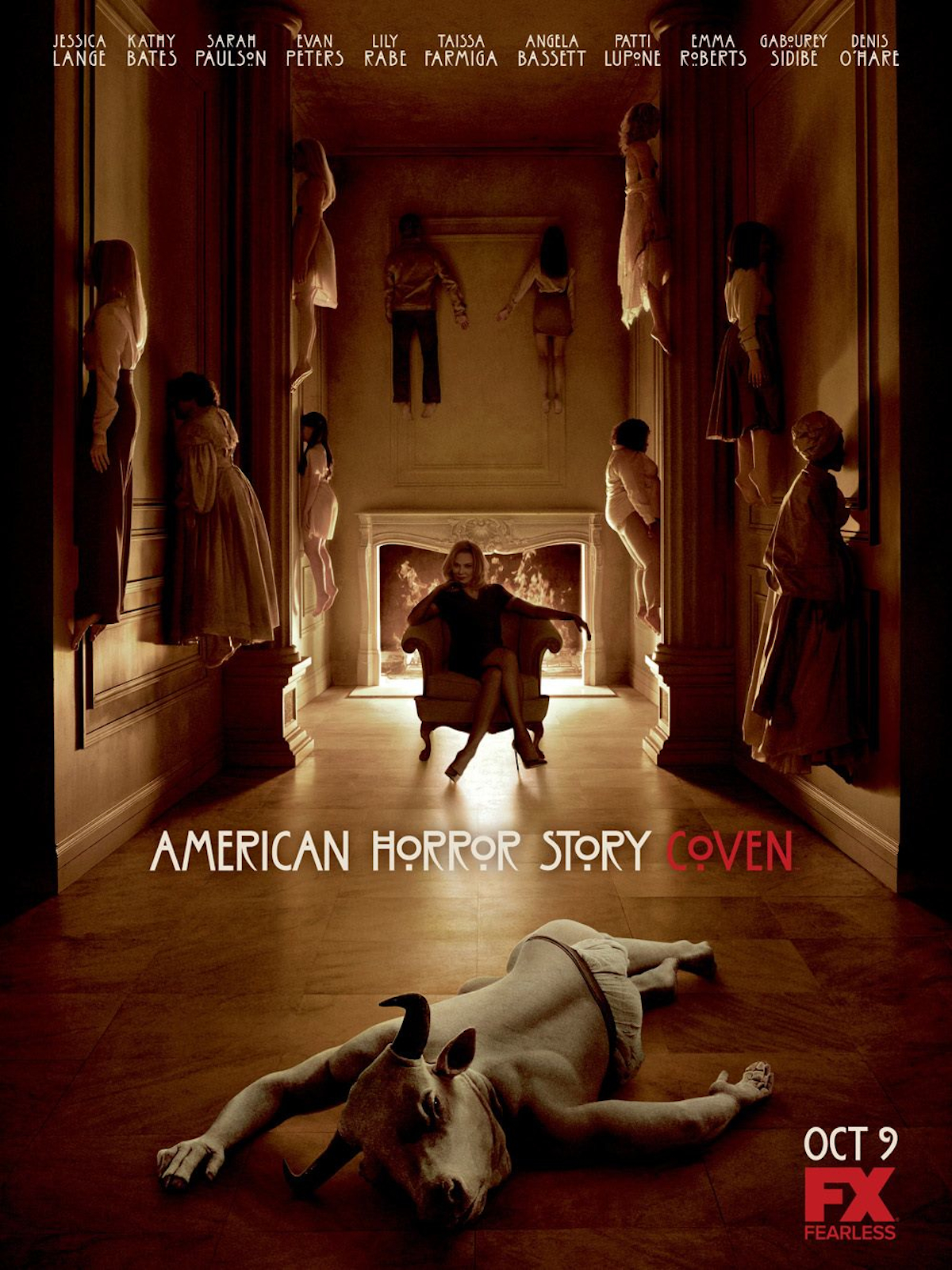 “When witches don’t fight, we burn.”
“When witches don’t fight, we burn.”
 While few shows on television are more twisted, perhaps the most bizarre thing about American Horror Story is that the creators of the franchise, Ryan Murphy and Brad Falchuk, are best known for that paragon of liberal smugness, Glee. It’s hard to think of two series more diametrically opposed, with AHS being deliciously mean-spirited, in a way much closer to Murphy/Falchiuk’s previous show, Nip/Tuck, but adding a far greater degree of viciousness. To steal a line once aimed at Margaret Thatcher by Denis Healey, AHS could fairly be accused of “glorying in slaughter,” as it romped through its first two seasons, set in a Los Angeles haunted house and New England lunatic asylum respectively. The stories it told were independent, albeit with a number of actors who appeared in both, playing different characters. Most notable among these was Jessica Lange, who showed exactly why she had won two Best Actress Oscars.
While few shows on television are more twisted, perhaps the most bizarre thing about American Horror Story is that the creators of the franchise, Ryan Murphy and Brad Falchuk, are best known for that paragon of liberal smugness, Glee. It’s hard to think of two series more diametrically opposed, with AHS being deliciously mean-spirited, in a way much closer to Murphy/Falchiuk’s previous show, Nip/Tuck, but adding a far greater degree of viciousness. To steal a line once aimed at Margaret Thatcher by Denis Healey, AHS could fairly be accused of “glorying in slaughter,” as it romped through its first two seasons, set in a Los Angeles haunted house and New England lunatic asylum respectively. The stories it told were independent, albeit with a number of actors who appeared in both, playing different characters. Most notable among these was Jessica Lange, who showed exactly why she had won two Best Actress Oscars.
The third season ramped things up to a whole new level, and also became one of the most gyno-centric shows on television. The setting moved to New Orleans, and a school called Miss Robichaux’s Academy, which is actually a front for the education of young witches. The headmistress is Cordelia Foxx (Paulson), living in the shadow or her mother, Fiona Goode (Lange), who is the “Supreme”, a position which she will do anything to retain. However, Goode increasingly feels threatened, not only by the current batch of pupils, but also her own mortality, since she has recently been diagnosed with terminal cancer. Another problem is the opposition of a coven of black witches, led by Marie Leveau, a bubbling animosity which escalates after Goode digs up the infamous Delphine LaLaurie, a brutal and unreconstructed racist, and another immortal, buried alive by Leveau in the 19th century.
Goode’s struggles to retain control are just one half of the story: there are also the pupils themselves, who are gradually discovering their own powers and what that entails. There are five of particular note, ranging from teenage brat movie star Madison Montgomery (Roberts), to wild child of the woods, Misty Day (Rabe). The latter is obsessed with, in looks and behaviour, Stevie Nicks from Fleetwood Mac – who has been rumoured for decades in urban lore to be a practicing witch. While that was amusing on its own, in one of the most amusing bits of stunt casting I’ve ever seen, the real Nicks turned up in a couple of episodes, playing herself. As mentioned above, Goode fears she’s on the fast track to being replaced as the Supreme, so for the girls, simply surviving to reach the “Seven Wonders” – the test to determine who has what it takes to replace the incumbent – will be tricky.
 “In this whole, wide, wicked world, the only thing you have to be afraid of, is me.”
“In this whole, wide, wicked world, the only thing you have to be afraid of, is me.”
I suppose you could read any number of metaphors here, more or less obvious, for other groups who have been oppressed due purely to their nature. But any such thoughts are far from a factor in our enjoyment of the show, which succeeds largely as the result of some brilliant performances. Beyond Lange, you’ve got fellow Oscar-winner Kathy Bates as LaLaurie, in a role which licks Misery into a cocked-hat for sheer unpleasantness. There are two further Academy Award nominees: Angela Bassett plays Leveau, while Gabourey Sidibe is Queenie, one of the new girls, whose main talent is that she can project whatever damage she does to herself, on to another person. She stabs herself, you get cut. It doesn’t take much imagination to figure out she’s going to be capable of defending herself against whatever life – or Fiona – can throw at her.
But it’s probably the scenes between Lange and Bassett which sealed this show as one of our favourites of the year. They have an electric intensity which is completely compelling, with a seething undercurrent of distaste, mixed with grudging respect, because each knows the other is equally as powerful. Circumstances eventually lead to them having to join forces, as a company of witch-hunters seek to take them both down. That it’s not a comfortable partnership, just adds to the fascinating dynamics of power, and it’s another aspect where the show shines. Beyond the performances, which are generally excellent, it’s the intrigue which helps make the show so watchable: it delivers a perpetually-shifting dynamic of alliances and enmity, like Dangerous Liaisons on meth. Oh, and anyone can die at any time – usually, nastily and bloodily. However, in many cases, that’s more a temporary inconvenience than anything, and it’s not so much death which is to be feared, as what might happen to your immortal soul thereafter.
I would have to admit, a possible weakness in the show is an excess of plot threads, which tend to whizz in and out, without truly adequate resolution, as proceedings gallop on to the next. As well as the witch-hunters, there’s Leveau’s minotaur-esque lover, the religious neighbours, and a story involving the resurrection of a boyfriend, that doesn’t quite go as planned. There’s enough raw material here for far more than the 13 episodes screened, but on the whole I’d far rather have over much crammed in to a show, than feel it’s spread too thinly. I’d probably also confess to some disappointment in the way the show ended, which wasn’t near the memorable bleakness of the preceding versions. Okay, if it wasn’t quite everyone joining hands to sign Kumbaya, I certainly expected a higher body-count, and less sense of dawn bringing a brighter future.
“This town ain’t big enough for the both of us. War is coming.. and you’re gonna lose.”
Still, these are minor quibbles, and it was a joy to watch something which played, at times, like a very, very pissed-off version of Charmed, but could also transcend just about anything you could predict or expect. It weaved fable and fact together beautifully – both Leveau and LaLaurie were real characters from New Orleans’ past – and provided some of the best and most interesting roles for women on television this year. Maybe it appeals to the submissive in us all, but it seems there’s nothing quite like an evil bitch, who has both the power to back it up, as well as the intelligence to know how to use it, and in Fiona Goode, we got to enjoy one of the best villainesses in the recent history of the medium. Lange is flat-out awesome, and can only be enjoyed as such.
There was certainly no doubt about the show’s mass popularity. Although some hardcore fans grumbled over the dark humour occasionally injected into proceedings, e.g. LaLaurie’s horror at the notion of a “negro” President, it can’t be argued that this version proved a significant improvement, ratings-wise, over its predecessors. They averaged 2.8 and 2.5 million viewers, but season three upped season two by more than 50%, with four million on average, and reaching a peak of over 5.5 million. A fourth edition was already commissioned, well before the third even reached the half-way point. It will no doubt move on to a new location and era once more [the details are vague – Lange is apparently working on her German accent!], yet it’ll be hard-pushed to match this season for either intensity, or its abundance of strong female characters.
Dir: Alfonso Gomez-Rejon and others
Star : Jessica Lange, Sarah Paulson, Emma Roberts, Lily Rabe
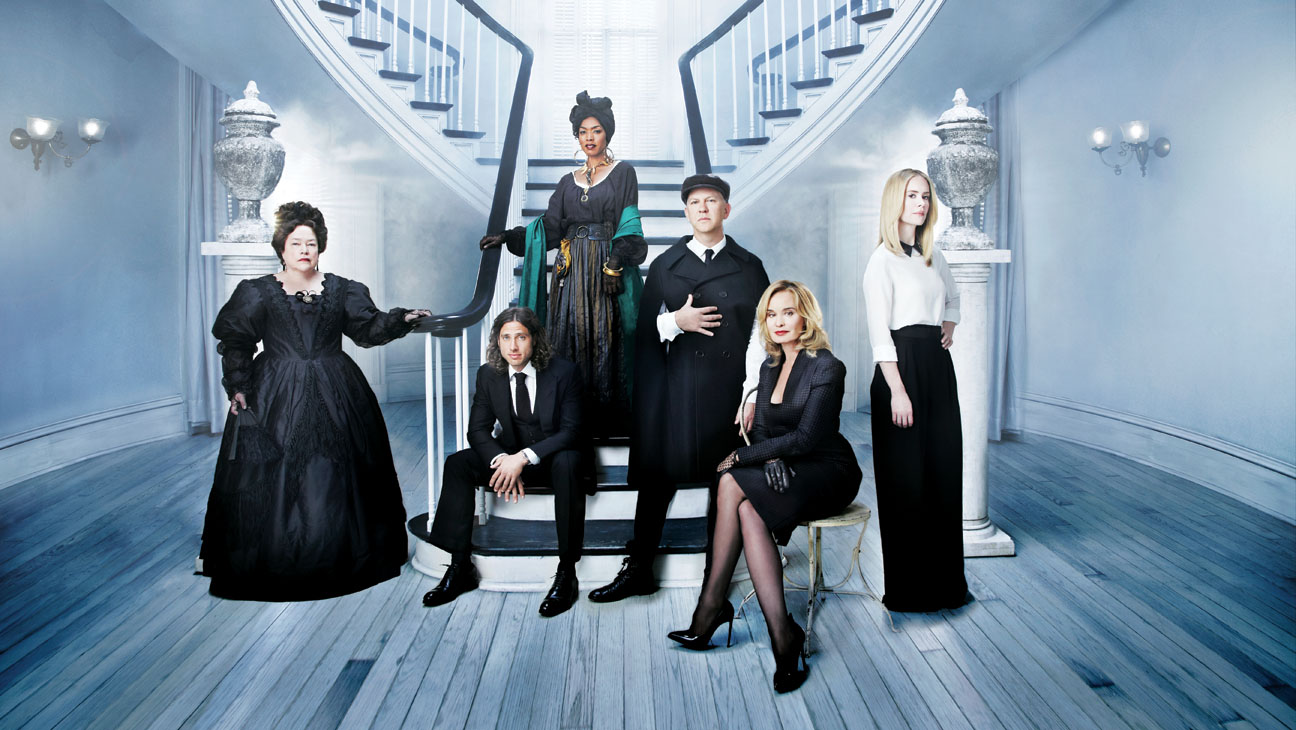
 What were you doing when you were 14? Going to school. Hanging out with friends. Being highly irritated by your parents. That’s probably fairly close. I’m quite sure the answer isn’t “spending two years sailing around the world by yourself.” Which would be Laura Dekker’s answer. The film chronicles her single-handed sailing expedition, as well as the path of her life which led her to the epic voyage, and the battle against the Dutch government, who considered the trip dangerous, and wanted to remove Laura from parental custody as a result. [That aspect reminded me of Ready to Fly, where the women ski-jumpers also had to go to court as part of their battle for acceptance]
What were you doing when you were 14? Going to school. Hanging out with friends. Being highly irritated by your parents. That’s probably fairly close. I’m quite sure the answer isn’t “spending two years sailing around the world by yourself.” Which would be Laura Dekker’s answer. The film chronicles her single-handed sailing expedition, as well as the path of her life which led her to the epic voyage, and the battle against the Dutch government, who considered the trip dangerous, and wanted to remove Laura from parental custody as a result. [That aspect reminded me of Ready to Fly, where the women ski-jumpers also had to go to court as part of their battle for acceptance]




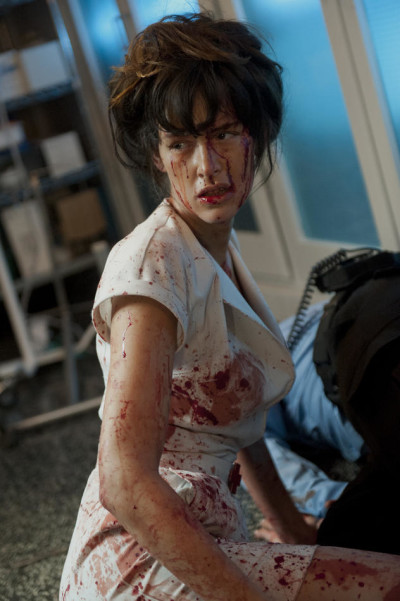










 I might have enjoyed this more, if I hadn’t recently sat through 25 episodes of basically the same plot, in Blood+. Generic anime storyline, #7: supernatural entity, trying to bring about the end of the world because… That’s what they do? In this case, there are sages and witches, who balance good and evil. 500 years ago, however, one from each side united, and the offspring was Bayonetta (Tanaka). She is now taking out angels, but there’s also a religious cult preparing for the rebirth of their saviour, a journalist who blames Bayonetta for the death of his father, and a mysterious, very whiny little girl, who keeps calling her “Mommy”. Who that turns out to be will surprise no one.
I might have enjoyed this more, if I hadn’t recently sat through 25 episodes of basically the same plot, in Blood+. Generic anime storyline, #7: supernatural entity, trying to bring about the end of the world because… That’s what they do? In this case, there are sages and witches, who balance good and evil. 500 years ago, however, one from each side united, and the offspring was Bayonetta (Tanaka). She is now taking out angels, but there’s also a religious cult preparing for the rebirth of their saviour, a journalist who blames Bayonetta for the death of his father, and a mysterious, very whiny little girl, who keeps calling her “Mommy”. Who that turns out to be will surprise no one. Boo (Chow) owns a failing boxing gym, and largely survives only by catering to masochistic geeks, with fantasies of being beaten up by Lara Croft, etc. To try and recoup customers driven away by her abrasive style, she hires the bubbly Miu (Lo), as a replacement for childhood friend TT (Yu), with whom she broke up after a spat over a man. Just as Miu brokers a reconciliation, the trio get an unexpected job offer, to work in Indonesia as bodyguards for the mysterious Lady Zhuge (Tong). Except, they eventually discover, this was just a lure to bring them in as fresh meat for her all-female fight club, where they must battle to the death.
Boo (Chow) owns a failing boxing gym, and largely survives only by catering to masochistic geeks, with fantasies of being beaten up by Lara Croft, etc. To try and recoup customers driven away by her abrasive style, she hires the bubbly Miu (Lo), as a replacement for childhood friend TT (Yu), with whom she broke up after a spat over a man. Just as Miu brokers a reconciliation, the trio get an unexpected job offer, to work in Indonesia as bodyguards for the mysterious Lady Zhuge (Tong). Except, they eventually discover, this was just a lure to bring them in as fresh meat for her all-female fight club, where they must battle to the death.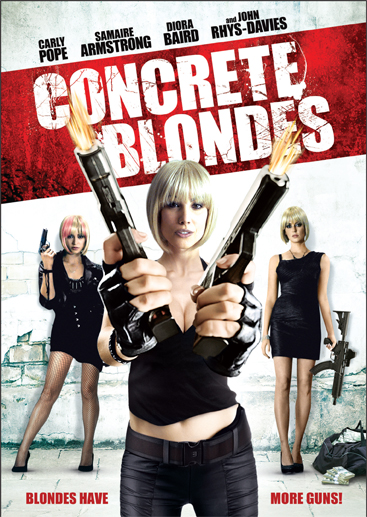 This is the story of three young women, sharing a house. There’s Kris (Pope), the sensible and apparently staid one, who works as a tax accountant; her flighty girlfriend Tara (Armstrong); and roommate Sammi (Baird). Tara and Sammi stumble into the aftermath of an apparent gangland shootout, exiting with a bag containing over $3 million in cash. The trio have very different ideas about what to do next, but Kris convinces them the best bet immediately, is to stash the bag in a lock-up, secured by three separate padlocks, with each holding one key, until they figure out if anyone is coming after the money. However, Sammi’s inability to keep her mouth shut proves disastrous, as her boyfriend is $50,000 in debt to local mob boss Kostas Jakobatos (Rhys-Davies), and sees an opportunity to clear the balance, and a lot more. Neither of the men have reckoned with Kris who, it turns out, is much more prepared for the situation than her two house-mates.
This is the story of three young women, sharing a house. There’s Kris (Pope), the sensible and apparently staid one, who works as a tax accountant; her flighty girlfriend Tara (Armstrong); and roommate Sammi (Baird). Tara and Sammi stumble into the aftermath of an apparent gangland shootout, exiting with a bag containing over $3 million in cash. The trio have very different ideas about what to do next, but Kris convinces them the best bet immediately, is to stash the bag in a lock-up, secured by three separate padlocks, with each holding one key, until they figure out if anyone is coming after the money. However, Sammi’s inability to keep her mouth shut proves disastrous, as her boyfriend is $50,000 in debt to local mob boss Kostas Jakobatos (Rhys-Davies), and sees an opportunity to clear the balance, and a lot more. Neither of the men have reckoned with Kris who, it turns out, is much more prepared for the situation than her two house-mates.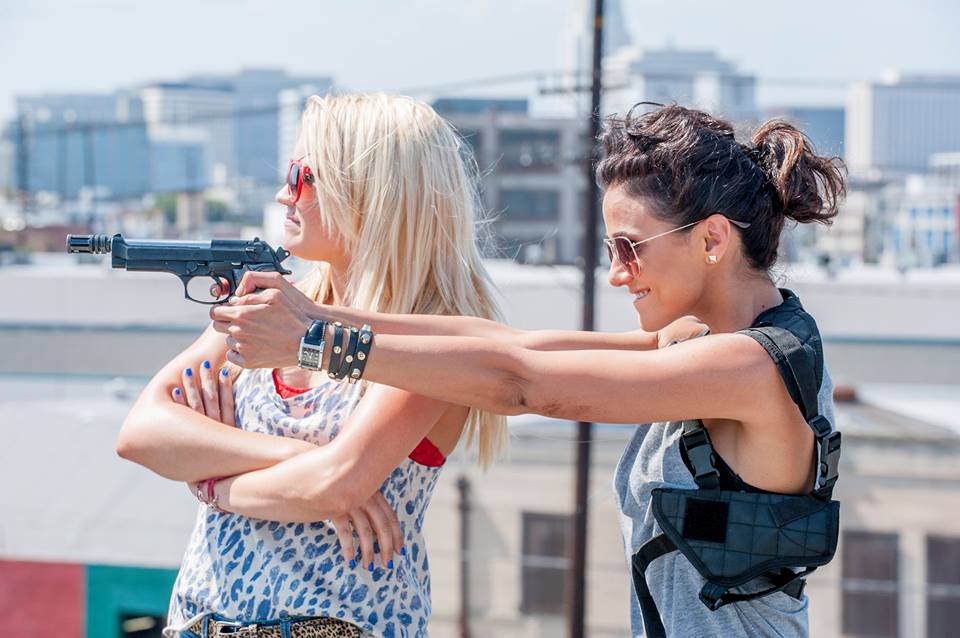 ★★★★
★★★★ Crackle is the streaming content subsidiary of Sony – it has been around for a while, but we only became aware of it last December, when a new widget popped up on our Apple TV. Think of it as a little like an advert-supported version of Netflix; you can watch for free, whenever you want, but you have to “pay” by sitting through commercials (during which the FF option on your remote is disabled. Bastards!). The library of movies and shows offered is based around that studio’s library, and has a number of entries for action heroine fans. Bonus points, not just for having Run Lola Run, but in the subtitled version; they also have Ultraviolet: Code 044, the anime spin-off from Milla Jovovich’s action-horror film, though that is only available dubbed. We’ll get to that later, I imagine, but the first thing to leap out at us was this original series, about a pair of female assassins. It’s certainly not to be confused with the Samuel L. Jackson movie or Benjamin Brett show.
Crackle is the streaming content subsidiary of Sony – it has been around for a while, but we only became aware of it last December, when a new widget popped up on our Apple TV. Think of it as a little like an advert-supported version of Netflix; you can watch for free, whenever you want, but you have to “pay” by sitting through commercials (during which the FF option on your remote is disabled. Bastards!). The library of movies and shows offered is based around that studio’s library, and has a number of entries for action heroine fans. Bonus points, not just for having Run Lola Run, but in the subtitled version; they also have Ultraviolet: Code 044, the anime spin-off from Milla Jovovich’s action-horror film, though that is only available dubbed. We’ll get to that later, I imagine, but the first thing to leap out at us was this original series, about a pair of female assassins. It’s certainly not to be confused with the Samuel L. Jackson movie or Benjamin Brett show. There are six episodes, but they’re barely 20 minutes each, discounting adverts, and by the time you remove the credits, and “previously/next time on Cleaners” sections, it’s basically a single feature. Maybe I’ll get round to editing it together in exactly that fashion. There’s a hint of Tarantino in the fast-paced dialogue, as the characters snark back and forth at each other – my favourite line was Roxie’s response, after Veronica had expounded on some topic: “Jesus! What did you have for breakfast? Wikipedia?” Leyden throws on large helpings of style, which is something of an acquired taste: in the first episode, it seemed more of a chore than a pleasure, but as the show wore on, he either restrained himself better or we grew used to it.
There are six episodes, but they’re barely 20 minutes each, discounting adverts, and by the time you remove the credits, and “previously/next time on Cleaners” sections, it’s basically a single feature. Maybe I’ll get round to editing it together in exactly that fashion. There’s a hint of Tarantino in the fast-paced dialogue, as the characters snark back and forth at each other – my favourite line was Roxie’s response, after Veronica had expounded on some topic: “Jesus! What did you have for breakfast? Wikipedia?” Leyden throws on large helpings of style, which is something of an acquired taste: in the first episode, it seemed more of a chore than a pleasure, but as the show wore on, he either restrained himself better or we grew used to it.
 While few shows on television are more twisted, perhaps the most bizarre thing about American Horror Story is that the creators of the franchise, Ryan Murphy and Brad Falchuk, are best known for that paragon of liberal smugness, Glee. It’s hard to think of two series more diametrically opposed, with AHS being deliciously mean-spirited, in a way much closer to Murphy/Falchiuk’s previous show, Nip/Tuck, but adding a far greater degree of viciousness. To steal a line once aimed at Margaret Thatcher by Denis Healey, AHS could fairly be accused of “glorying in slaughter,” as it romped through its first two seasons, set in a Los Angeles haunted house and New England lunatic asylum respectively. The stories it told were independent, albeit with a number of actors who appeared in both, playing different characters. Most notable among these was Jessica Lange, who showed exactly why she had won two Best Actress Oscars.
While few shows on television are more twisted, perhaps the most bizarre thing about American Horror Story is that the creators of the franchise, Ryan Murphy and Brad Falchuk, are best known for that paragon of liberal smugness, Glee. It’s hard to think of two series more diametrically opposed, with AHS being deliciously mean-spirited, in a way much closer to Murphy/Falchiuk’s previous show, Nip/Tuck, but adding a far greater degree of viciousness. To steal a line once aimed at Margaret Thatcher by Denis Healey, AHS could fairly be accused of “glorying in slaughter,” as it romped through its first two seasons, set in a Los Angeles haunted house and New England lunatic asylum respectively. The stories it told were independent, albeit with a number of actors who appeared in both, playing different characters. Most notable among these was Jessica Lange, who showed exactly why she had won two Best Actress Oscars.















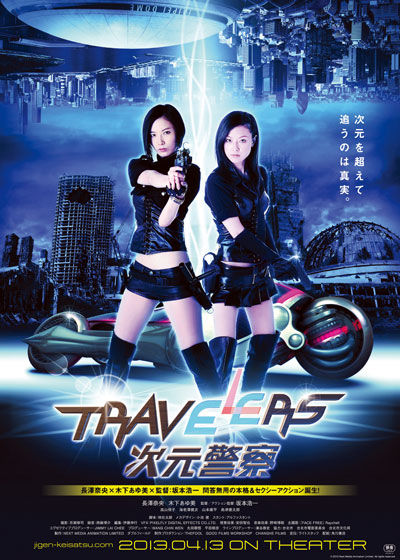 This doesn’t so much hit the ground running, as plummet into it at top speed, to such an extent I genuinely stopped the film, to check if this was perhaps part two of an ongoing series. It isn’t: it’s just that unconcerned about explanations. What seems to be going on, is a universe where the different dimensions are now connected. Hence, there’s Retro World, Fairy World, Lost World, etc. This offers new criminal possibilities; to counter these, a trans-dimensional police force is also created. One such officer is Ai (Nagasawa), but her mission, to protect a psychic (Takayama) against the terrorist group Doubt is thrown into… Well, doubt after she meets her former partner Yui (Kinoshita), who appears to have thrown her lot in on the side of the villains.
This doesn’t so much hit the ground running, as plummet into it at top speed, to such an extent I genuinely stopped the film, to check if this was perhaps part two of an ongoing series. It isn’t: it’s just that unconcerned about explanations. What seems to be going on, is a universe where the different dimensions are now connected. Hence, there’s Retro World, Fairy World, Lost World, etc. This offers new criminal possibilities; to counter these, a trans-dimensional police force is also created. One such officer is Ai (Nagasawa), but her mission, to protect a psychic (Takayama) against the terrorist group Doubt is thrown into… Well, doubt after she meets her former partner Yui (Kinoshita), who appears to have thrown her lot in on the side of the villains.